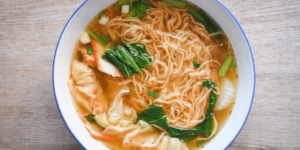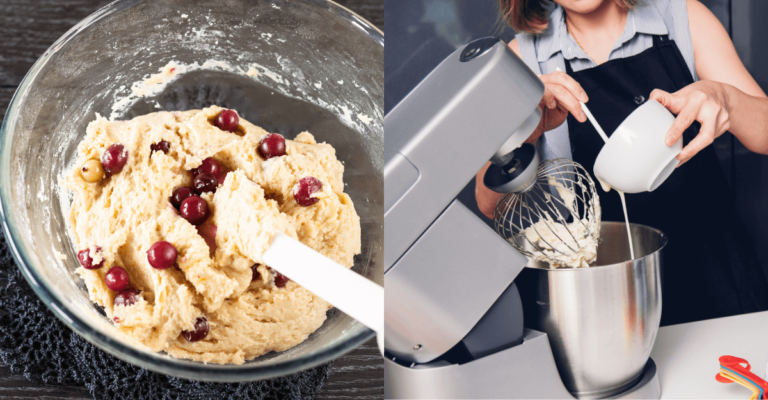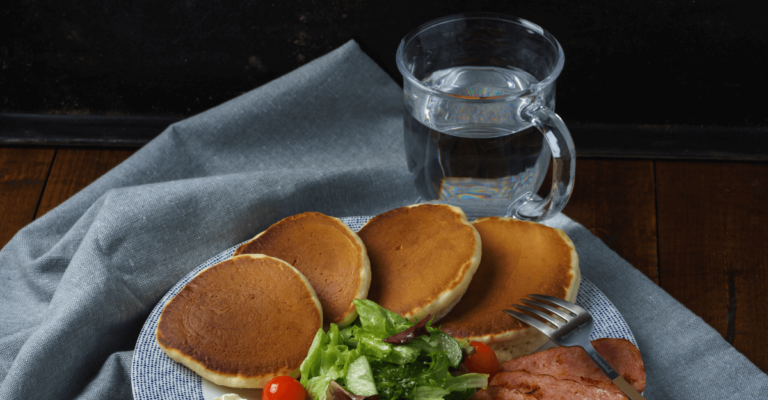Part 1: Introduction Egg noodles in soup
Egg noodles in soup – a culinary delight that’s both simple and complex. But, have you ever wondered why sometimes these noodles turn disappointingly soggy? In this article, we’re diving deep into the world of soup preparation, specifically focusing on how to maintain that perfect noodle texture.
The Quest for the Perfect Noodle Texture
Why is noodle texture so crucial, especially in soups? Well, it’s the texture that often defines the eating experience. A perfectly cooked egg noodle offers a delightful chewiness, enhancing the overall flavor of the soup. On the other hand, a soggy noodle can turn a potentially delicious meal into a less appetizing experience.
The Balancing Act in Soup Making
Making soup with firm egg noodles is a balancing act. It’s not just about throwing all the ingredients into a pot and hoping for the best. It involves understanding how egg noodles interact with the broth, how long they should be cooked, and what techniques can prevent them from becoming too soft.
So, how do you ensure that your egg noodles remain firm and appetizing in soup? The answer lies in a combination of choosing the right type of noodles, cooking them correctly, and adding them to your soup in a way that preserves their texture.
In the following sections, we’ll explore these aspects in detail, providing you with practical tips and tricks to elevate your soup game. Whether you’re a seasoned chef or a home cook, these insights will help you master the art of making the perfect noodle soup. Stay tuned as we delve into the fascinating world of soup recipes and noodle cooking!
Part 2: Understanding Egg Noodles in Soup
When it comes to soup recipes, the choice of noodles can make or break the dish. Egg noodles, with their rich texture and ability to absorb flavors, are a popular choice. But what exactly makes them unique in soups?
The Unique Nature of Egg Noodles in soupe
Egg noodles are made with a simple mixture of eggs and flour, often enriched with a touch of salt. This combination gives them a distinct, slightly rich flavor and a chewy texture that’s ideal for soups. However, their ability to absorb liquids can be both a blessing and a curse. While they can soak up the delicious flavors of your broth, they can also become overly soft and mushy if not handled correctly.
Interaction with Soup Broth
The key to maintaining the perfect noodle texture in soup lies in understanding how egg noodles interact with the broth. When added to a liquid, these noodles begin to absorb moisture. If left for too long or cooked improperly, they can swell and lose their firmness, leading to that dreaded sogginess.
So, what’s the secret to keeping egg noodles firm in soup? It’s all about timing and technique. Adding the noodles at the right moment and cooking them just enough ensures they retain their texture while still being cooked through.
In the next section, we’ll dive into specific strategies to prevent your egg noodles from turning soggy in soup. These tips will be a game-changer for your soup preparation, ensuring that every spoonful is a delightful experience. Stay tuned as we uncover the secrets to perfect noodle texture in soups!

Part 3: Preventing Sogginess in Egg noodles in soup
Achieving the perfect noodle texture in soup is a culinary endeavor that many aspire to master. Here, we’ll explore some foolproof strategies to prevent your egg noodles from becoming soggy, ensuring they add just the right texture to your soups.
Pre-Cooking Techniques for Firm Noodles
- Boil Separately: A key technique is to boil the noodles separately before adding them to the soup. This approach allows you to control the cooking process more precisely, ensuring the noodles are just the right texture before they even touch the broth.
- Rinse After Boiling: Once boiled to the desired firmness, quickly rinse your noodles under cold water. This stops the cooking process and washes away excess starch, which can contribute to sogginess.
- Undercook Slightly: When boiling the noodles, aim for al dente – slightly firm to the bite. This is crucial because the noodles will continue to cook once added to the hot soup.
Best Practices for Adding Noodles to Soup
- Timing is Everything: Add the noodles to your soup towards the end of the cooking process. This minimizes their exposure to heat and liquid, helping them maintain their firmness.
- Portion Control: Only add as many noodles as you’ll eat immediately. If you anticipate leftovers, store the soup and noodles separately to prevent the noodles from soaking up too much broth.
- Mind the Temperature: If your soup is boiling when you add the noodles, they’ll cook too quickly. Instead, add them to a simmering pot, giving you more control over their texture.
Tips for Maintaining Noodle Texture During Cooking
- Stir Gently: Once the noodles are in the soup, stir gently to prevent them from sticking together. This ensures even cooking and helps maintain their individual integrity.
- Watch the Clock: Keep an eye on the cooking time. Even a minute too long can turn your perfectly al dente noodles into a mushy disappointment.
- Sample as You Go: Taste a noodle or two as they cook in the soup. This is the best way to gauge their texture and decide when they’re ready.
By following these tips, you’ll be well on your way to serving up soups with beautifully textured noodles that hold their own against the broth. In the next part, we’ll delve into specific cooking techniques and additional tips to further enhance your soup-making skills. Stay tuned for more insights into creating the perfect bowl of noodle soup!
Part 4: Cooking Techniques and Tips
In this part, we delve deeper into the art of cooking egg noodles for soup. By mastering a few key techniques and tips, you can significantly enhance the flavor and texture of your dish, making every spoonful a delight.
Ideal Boiling Methods for Egg Noodles
First and foremost, always start with a pot of vigorously boiling water. This ensures that the noodles begin cooking immediately, preventing them from soaking up too much water and becoming soggy.
Additionally, don’t forget to salt the water. This simple step not only adds flavor but also helps firm up the noodles by altering the starches in them.
Moreover, it’s crucial to avoid overcrowding the pot. Cooking your noodles in a large pot allows them to cook evenly and prevents them from sticking together.
The Role of Ingredients Like Salt and Olive Oil
Importantly, salt isn’t just for flavor; it’s also about texture. Adding salt to the boiling water seasons the noodles and helps maintain their firmness.
Furthermore, a drizzle of olive oil in the boiling water can prevent the noodles from sticking together. However, use it sparingly, as too much can prevent the broth from adhering to the noodles.
Serving Suggestions to Avoid Sogginess egg noodles in soup
One effective strategy is to serve the noodles separately, especially if you’re not planning to consume the entire pot of soup at once. This way, each person can add noodles to their bowl, preventing them from sitting in the broth and becoming soggy.
Also, consider the timing of assembly. Assemble the soup with noodles just before serving to minimize the time the noodles spend in the broth.
Lastly, the consistency of your broth can affect the noodle texture. A thinner broth is less likely to make the noodles soggy compared to a thicker one.
By employing these cooking techniques and tips, you ensure that your egg noodles are perfectly cooked and complement your soup beautifully. In the next part, we’ll discuss the importance of choosing the right type of noodles for your soup and how different varieties can impact the texture and overall dish. Stay tuned for more expert advice on crafting the perfect noodle soup!
Part 5: Choosing the Right Noodles
The type of noodles you choose for your soup can significantly impact the dish’s texture and overall enjoyment. In this part, we’ll explore how different noodle types behave in soup and why selecting the right kind is crucial for achieving that perfect noodle texture.
Types of Noodles and Their Textures egg noodles in soup
- Egg Noodles: Traditional egg noodles are known for their rich, eggy flavor and firm texture. They are ideal for hearty soups where you want the noodle to stand out.
- Rice Noodles: These are a great gluten-free option and are typically used in Asian-style soups. They have a lighter texture and require careful cooking to avoid becoming too soft.
- Whole Wheat Noodles: These are a healthier option, high in fiber. However, they tend to absorb more liquid and can become mushy if overcooked.
Benefits of Using Durum or Semolina Flour Noodles
- Durability in Soup: Noodles made from durum or semolina flour are known for their durability and ability to maintain texture in liquid. This makes them an excellent choice for soups.
- Ideal Texture: These noodles have a firm, satisfying texture that holds up well against the broth, making them less likely to turn soggy.
- Flavor Absorption: Durum and semolina flour noodles are not just about texture; they also do a great job of absorbing the flavors of the soup without losing their integrity.
Tips for Noodle Selection
- Consider the Soup Type: The type of soup you’re making should influence your noodle choice. Rich, hearty soups pair well with sturdy egg noodles, while lighter broths might be better suited to rice noodles.
- Experiment with Varieties: Don’t be afraid to experiment with different noodle types. Each variety can bring a unique texture and flavor to your soup.
- Quality Matters: Opt for high-quality noodles, regardless of the type. Better quality often means better texture and flavor retention.
Choosing the right type of noodle for your soup is a crucial step in ensuring a delightful eating experience. In the next part, we’ll delve into advanced tips and tricks for cooking noodles, focusing on how to further refine your skills in making the perfect noodle soup. Stay tuned for more insights and expert advice!
Part 6: Advanced Tips and Tricks
Now that we’ve covered the basics of choosing and cooking noodles for soup, let’s dive into some advanced tips and tricks. These will help you refine your soup-making skills and ensure that your egg noodles always have the perfect texture.
Adjusting Cooking Times for Optimal Texture
- Al Dente is Key: Remember, cooking your noodles to al dente is crucial. This means they should be tender but still have a bit of bite. It’s especially important for soups, as noodles continue to cook slightly in the hot broth.
- Shorter Cooking Time: When pre-cooking noodles for soup, aim to cook them for a slightly shorter time than the package suggests. This accounts for the additional cooking they’ll undergo in the hot soup.
- Constant Testing: Don’t just set a timer and forget. Test the noodles frequently towards the end of the cooking time to ensure they’re just right.
Strategies for Storing and Reheating Noodle Soups
- Store Separately: If you anticipate leftovers, store the noodles and broth separately. This prevents the noodles from absorbing too much liquid and becoming mushy.
- Reheat with Care: When reheating, add the noodles to the soup at the last minute. This helps maintain their texture and prevents overcooking.
- Adding Fresh Noodles to Leftovers: For an even better experience, consider cooking a fresh batch of noodles when reheating leftover soup. This ensures the noodles are at their best texture.
Additional Tips for Perfect egg noodles in soup
- Mind the Broth Temperature: When adding pre-cooked noodles to soup, ensure the broth is hot but not boiling. This warms the noodles without overcooking them.
- Balancing Flavors and Textures: Remember, soup is a harmony of flavors and textures. Your noodles should complement, not overpower, the other ingredients.
- Experiment with Cooking Styles: Don’t be afraid to experiment with different cooking styles. For instance, try adding noodles at different stages of the soup-making process to see how it affects the outcome.
By incorporating these advanced tips and tricks into your soup preparation, you’ll be well on your way to creating noodle soups that are a delight in every spoonful. In the next part, we’ll discuss how to fix overcooked noodles, offering solutions for those times when things don’t go as planned. Stay tuned for more practical advice and soup-making secrets!
Part 7: Fixing Overcooked Noodles
Sometimes, despite our best efforts, noodles end up overcooked. But don’t toss them just yet! Here are some tips to salvage those mushy noodles and even prevent future mishaps.
Salvaging Mushy Noodles
- Halt the Cooking: Immediately remove the noodles from heat and rinse them under cold water. This stops them from softening further.cooking egg noodles in soupe
- Drain Well: After rinsing, drain the noodles thoroughly. Removing excess water helps prevent them from becoming even soggier.
Creative Uses for Overcooked Egg noodles in soup
- Casseroles: Soft noodles can be hidden in casseroles, where texture is less critical.
- Noodle Bakes: Mix them with sauce and cheese, and bake. The oven’s heat can help firm them up a bit.
- Stir-Fries: Add them to stir-fries at the last minute. The quick, high heat can somewhat revive their texture.
Preventing Overcooked Noodles
- Timely Checks: Set a timer for a minute less than the package suggests and start checking early.
- Stay Nearby: Keep an eye on your noodles as they cook to catch them at the perfect moment.
- Learn by Doing: Each cooking experience, even the not-so-perfect ones, teaches you more about judging the right doneness.
Overcooked noodles aren’t the end of the world. With these tips, you can give them a new lease on life. In our next and final part, we’ll answer some frequently asked questions about cooking egg noodles in soup, providing you with even more knowledge to perfect your noodle soup dishes. Stay tuned for these helpful insights!
Part 8: FAQs Egg noodles in soupe
In this section, we’ll tackle some frequently asked questions about cooking egg noodles in soup. By addressing these queries, we aim to enhance your understanding and confidence in the kitchen.
How to Keep Egg Noodles from Absorbing Too Much Broth?
Answer: To prevent egg noodles from absorbing too much broth, firstly, cook them separately. Secondly, add them to the soup just before serving. This approach ensures they maintain their texture without soaking up excess liquid.
Why Do Noodles in Canned Soup Stay Firm?
Answer: Interestingly, noodles in canned soup stay firm because they are slightly undercooked before canning. The canning process then preserves their texture. Consequently, when you heat the soup, the noodles finish cooking without becoming overdone.
Additional Common Questions and Answers
- Can I Reuse Overcooked Noodles?
- Absolutely! Overcooked noodles can be creatively repurposed in casseroles, bakes, or stir-fries, where their softer texture is less noticeable.
- What’s the Best Way to Store Leftover Noodle Soup?
- Ideally, store the noodles and broth separately. This strategy prevents the noodles from becoming mushy. When you’re ready to eat, simply combine them during reheating.
- How Long Should I Cook Egg Noodles in Soup?
- If adding them directly to the soup, aim for about 5-7 minutes, or until they’re al dente. However, adjust the time based on the noodle type and your personal preference.
- Can I Add Raw Noodles Directly to Soup?
- Yes, you can add raw noodles directly to the soup. Just ensure they have enough time to cook through, and be mindful not to overcook the other ingredients.
- Are There Gluten-Free Alternatives to Egg Noodles?
- Certainly! Rice noodles or various gluten-free pasta options are excellent alternatives. Be aware of their different cooking times and textures.
With these questions answered, you should feel more equipped to tackle the challenge of cooking egg noodles in soup. Remember, cooking is a journey of discovery and personalization. Feel free to experiment and adjust these tips to suit your unique tastes and preferences. Happy cooking!
Part 9: Conclusion Egg noodles in soup
As we come to the end of our comprehensive journey through the world of cooking egg noodles in soup, let’s take a moment to recap the essential points. This summary will help solidify your understanding and ensure your future noodle soups are as delightful as they can be.
Summarizing the Essentials egg noodles in soup
Firstly, we learned the importance of pre-cooking noodles. Boiling egg noodles separately and then rinsing them under cold water stops the cooking process, crucially maintaining their firm texture.
Secondly, the timing of adding noodles to your soup is key. Introduce them towards the end of the cooking process to avoid overcooking in the broth.
Thirdly, choosing the right type of noodle is vital. Depending on your soup, durum or semolina flour noodles might be the best choice for their firm texture.
Additionally, when it comes to leftovers, storing noodles and soup separately is a game-changer. This method prevents the noodles from turning mushy. When reheating, simply combine them for a fresh-tasting meal.
Lastly, don’t despair over overcooked noodles. They can be creatively used in casseroles, bakes, or stir-fries, where their texture is less critical.
Wrapping Up with Recommendations egg noodles in soup
In conclusion, mastering the art of cooking egg noodles in soup is a balance of technique, timing, and intuition. Each type of noodle brings its unique characteristics to your dish, and understanding these nuances is key to culinary success.
Remember, every cooking experience, even the ones that don’t go as planned, is an opportunity to learn and grow in your cooking journey. So, keep experimenting, adjust these tips to your taste, and most importantly, enjoy the process of creating delicious noodle soups.
We hope this guide has been a valuable resource in your culinary adventures. Here’s to many more bowls of perfectly cooked noodle soup – happy cooking!






